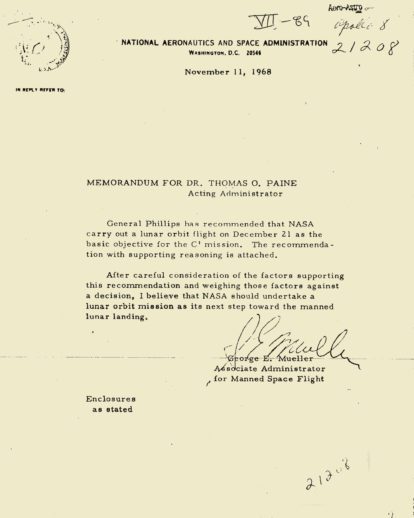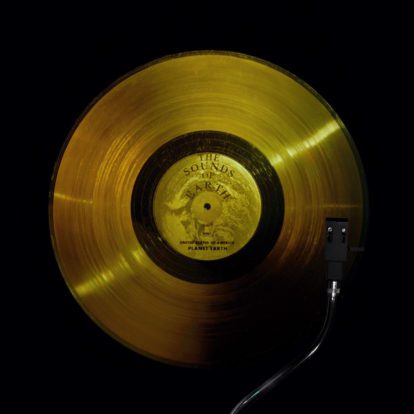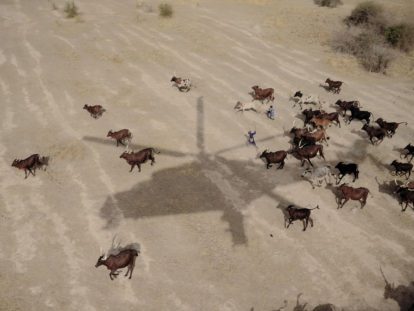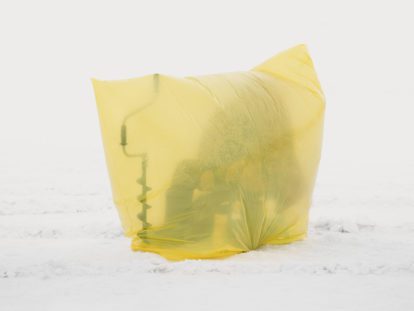There cannot be many explorers who are conversant with the work of Immanuel Kant, and even fewer philosophers who have skied to the uttermost ends of the Earth. Smack dab in the middle of this all-but-non-existent Venn diagram is Erling Kagge. The 53-year-old Norwegian entered history on May 4th 1990 upon completing the first unsupported ski journey to the North Pole, and again in 1993 as the first man ever to walk alone to the South Pole.
He followed this feat one year later by becoming the first in history to walk unsupported to the top and bottom of the world and to reach the summit of Everest. By then he had already sailed across the Atlantic (twice), rounded Cape Horn and sailed to Antarctica and back. He’d also earned a law degree from the University of Oslo, and between the North Pole and South Pole expeditions worked as a lawyer for Norsk Hydro. What was there to do after Everest but spend a year reading philosophy at Cambridge?
Now a successful entrepreneur, having settled down in Oslo to run the publishing company that bears his name, Kagge would be the first to tell you that his early life hardly presaged such accomplishments. He grew up bucktoothed and dyslexic, and his Norwegian-accented English still bears a trace of the speech impediment that plagued him as a child. He was a miserable, unruly student who, he says, “came as close to failing at gym as at maths”.
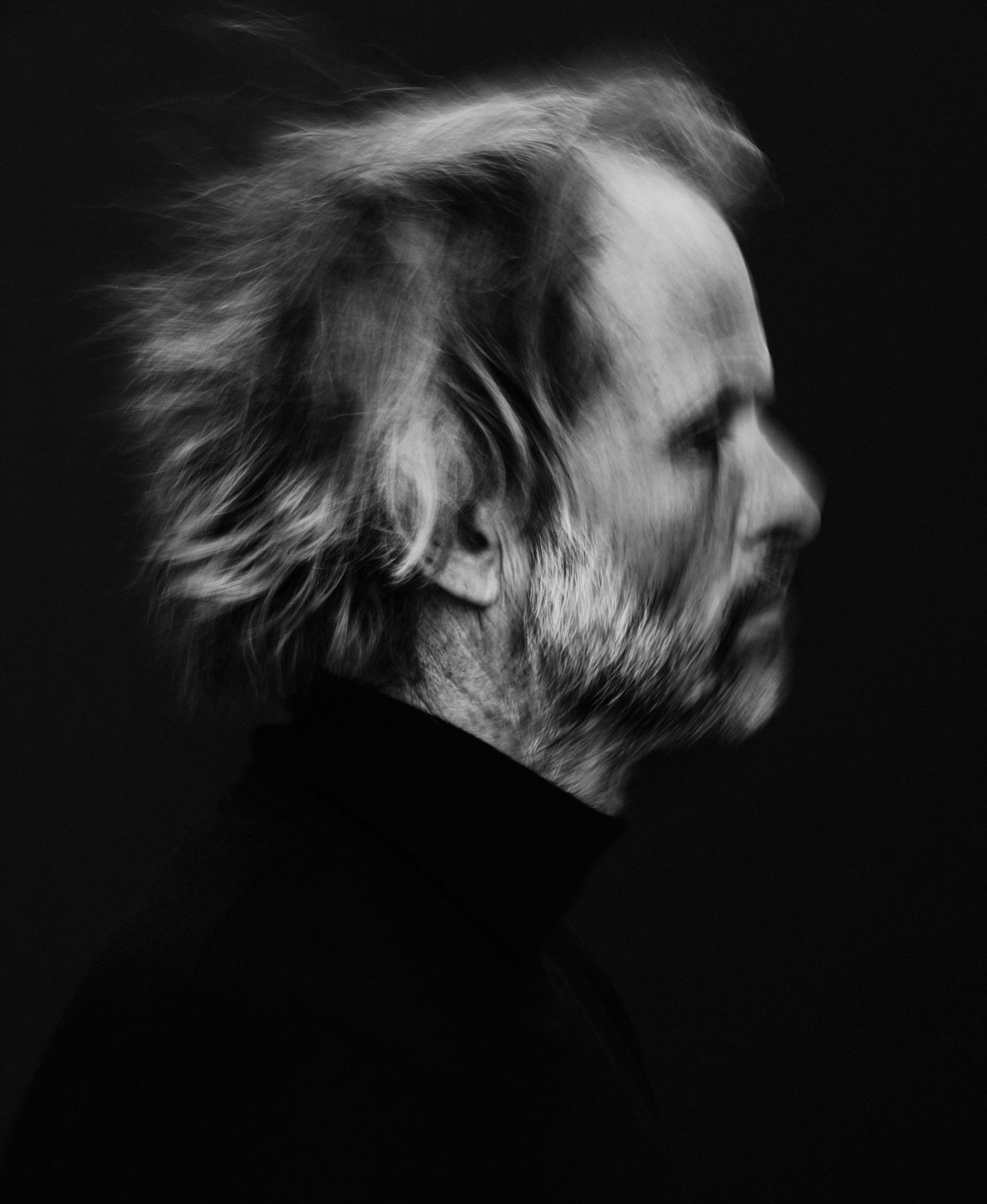
Image: Lars Petter Petterson/Tinagent
His father was sceptical of his youthful ambitions. Yet somewhere along the way, inspired by fellow Norwegians Roald Amundsen and Thor Heyerdahl, he became the 29-year-old who was so confident in his desire to spend the entirety of his South Pole trek cut off from civilisation that he, as a last act before disembarking the plane, discarded the batteries belonging to the radio his sponsor had insisted he bring along. (Not wanting to litter, he proceeded to lug the useless 11- pound radio all the way to the pole.) Having undertaken the North Pole trek with two other men – one of whom withdrew due to injury – it was only now, on the southern ice, that Kagge was truly alone. On day 26 of his journey, with hundreds of unpeopled kilometres behind and before him, he wrote in his journal: “Here stillness is all-absorbing. I feel and hear it… The soundless space does not feel threatening or terrifying, but comforting.”
During our conversation, he quoted Pascal and Tennyson; referred to raising children as “the fourth ‘pole’ – the easiest one to reach but the most difficult afterwards”; and discussed his continuing fascination with the subject of stillness and silence. Although his ice-blue eyes are perhaps a little paler; his hairline receding and the dark going to grey; his face careworn as much, perhaps, by the challenges of raising three daughters – aged 13, 16 and 19 – as by exposure to the elements, he is still recognisably the man who approached his history-making expeditions less as a physical challenge than as a mental fight. “The struggle lies between the ears,” he has written, “not in the feet”.
IT’S IMPORTANT TO THINK THAT TOMORROW IS GOING TO BE BETTER THAN YESTERDAY. I FEEL THIS AS AN EXPLORER AND AS AN ENTREPRENEUR.
Erling Kagge
You had a rather difficult childhood, dealing with bullying, and with speech and learning difficulties. When did you first know that you wanted to become an explorer?
I think everybody is born an explorer. You find out after a while that you would like to explore the world. A friend of mine – Arne Næss, the philosopher – was asked, “Why do you climb mountains?” and he replied, “Why did you quit?” I think it has been there all the time. Somehow I feel that I never started exploring and I never finished exploring. I was definitely a loser in terms of being a pupil at school, that’s for sure. But I think in general people do things not because of but in spite of. So I don’t want to romanticise being bullied and having problems because of dyslexia. Experience is the best school you can have, although it’s also the most expensive.
When you trekked to the North Pole with Børge Ousland, you were racing against the Koreans, Russians, British and Canadians. To what extent were you driven by national pride or competitive spirit?
National pride a little bit, but not very much. Before we started it was definitely a competitive issue, and also the first couple of weeks, and all the way through the trek, but it got kind of less and less, because we didn’t have radios we could use to talk to the outside world, so we didn’t even know how the others were progressing. And we knew that we’d pushed on as hard as we could, so if somehow we hadn’t gotten to the pole before the others, I think still we’d have been pleased, because we definitely did our best.
When you trekked to the South Pole it was important to you, not only that you go on foot, alone and unsupported, but also that you be completely isolated for every one of those 1,350 kilometres. Why did you insist upon this aspect of the journey?
Usually when people walk alone somewhere today, they have radio contact daily. I wanted to be by myself – experience the solitude, the stillness. It sounds more difficult to do it that way, but to me it was easier. When I talk to friends who do these solo trips and they talk to their spouses, they get all the usual stuff – “The washing machine has broken down, I need to have someone repair it”; “I’m running out of cash because I have to pay all these bills” – everything you would like to avoid and get away from. So I think it’s kind of easier to walk alone not being in touch with the outside world. Of course you feel lonely, but when you talk to people it becomes a different kind of loneliness that is, to me, not very attractive.

During his four year attempt at the Three Poles Challenge, Erling Kagge became the first person to reach both the North and South Poles unsupported
You’ve written that in going to the South Pole the journey on skis became a journey into yourself. What can a person learn about him or herself in such trying conditions?
I think anyone would learn a lot about themselves just by being on their own. One of the major challenges for people today is being alone without doing anything for five minutes. I’m not against this IT revolution at all, but my daughters can hardly be anywhere without distracting themselves. The philosopher Blaise Pascal said in the 17th century that it was a major problem, and that’s definitely still the case. I think it’s really important to socialise afterwards, but you can have a good time with yourself.
It’s hard to say what I learned, because somehow you are a part of all that you have met. When you start an expedition, you feel that everything is flat; everything is white all the way to the horizon. Your relationship to the environment is developing, and eventually you see that it’s not white, it’s variations of white, it’s a bit greenish, reddish; and the surface is not flat, either. For me it was a very good school.
Forty days into your South Pole expedition, you made the mistake, as you later put it, of calculating the time and distance that remained before you would reach your goal. The South Pole “went from being a good and distant dream to becoming a mathematical point”. What is the biggest mistake an adventure seeker can make that will spoil the adventure?
I think the major mistake people make is that they give up too early. During a trek it’s natural that sometimes you think about negative things. But of course it’s really important – definitely on expeditions, but also in daily life – to think that tomorrow is going to be better than yesterday. I feel this as an explorer and as an entrepreneur.
On both the North Pole and South Pole expeditions – the North Pole with Børge – we decided, just for pragmatic reasons, that we were not allowed to swear at all, not say anything really negative. There are so many negative things to focus on, so you need to avoid those. And especially avoid saying them, because then they get even stronger. So when I walked to the South Pole, I hardly said anything. I never swore. I kept my mouth shut. Of course the most important thing is to put one leg in front of the other, but also you need to try to have a good time. Life is difficult, and it’s not supposed to be without pain or loss ever. I don’t fancy the cold or pain more than others, but they are part of it.

Kagge’s Arctic and Antarctic expeditions saw him cover nearly 2,000km over 110 days; he has crossed the Atlantic twice and scaled the 8,848 metres to the summit of Everest.
You have said that the need for recognition and attention were motivating factors for you in your expeditions. How did it feel to make the cover of Time and get the recognition you’d hoped for?
Very strange. I pointed out that recognition is important because quite often explorers talk about the environment, the desire to help other people, charity, etc. as the main reasons for going on an expedition. In my experience, that’s bullshit. Of course those could be some of the reasons, but the major reasons are egocentric. I wouldn’t call it egoistic, but at least egocentric. But then you have other reasons which are much more sympathetic. At least for me, and I think also for others, recognition is important. And then to get that cover of Time was surprising. And I liked it.
Was it gratifying to see your dream recognised by others?
Yeah, absolutely. It was kind of beyond my dream, because I never dreamt about being on the cover of Time. But on the other hand, if you came to my home you would see that I have nothing in my home relating to the Time cover – not even to my expeditions. Not even the books I’ve written. Because life goes on. I’m proud of it, and my kids know about it, but we never talk about it. The important thing is to fulfil your own potential, and I’m really happy about my life as an explorer. As I said, I never felt I started, never felt I quit – but as a father it’s not important.
NUMBERS
04
Years it took Kagge to be the first to complete the Three Poles Challenge on foot.
814
Distance in miles Kagge travelled unsupported to reach the South Pole.
58
Days it took Kagge to reach the North Pole.
Did you always have it in your head to conquer both poles and Everest? Or did it emerge organically as you made first one expedition and then another?
No. Not at all. First I just wanted to sail around the world, seeing different cultures, and that held true through the ‘80s. It was not publicised much at all; I just hiked and sailed and climbed and had an interesting time. And then, in the late ‘80s, I decided to walk to the North Pole. I got back in May [‘90], wrote a book, and then started work as a lawyer in September. I worked as a lawyer for two years, but then I started to think about the South Pole – doing the South Pole alone – and made a decision right away to do it. Of course, walking to the South Pole is an absurd thing to do, so I really didn’t think about it in a rational way. I just made the decision: “I’m going to do it”. And then afterwards I was thinking about how I could actually do it.
You summited Everest despite having a fear of heights. How often have you set yourself challenges specifically to conquer your own fears?
That was also a competitive thing. I felt that I would like to be the first to reach these three places. I had a fear of heights, and I had a flat lung, so I had been advised not to climb high mountains or do deep-sea diving. But I felt it was worth it. So it was not ‘despite fears’ or anything; I just kind of felt it was worth taking the risks. Just before I left for the South Pole expedition, I started to think about Everest. And during the trek I decided to go for Everest. I wanted to do it as soon as possible after the expedition, because at that time there were maybe 15 other people who had been to two out of the three places. But time went on, and then in the spring of ’94 I finally went down to Nepal and did Everest.
When did you find out that you had a flat lung?
That was in law school, probably ’86. I was exercising really hard and I got this flat lung, and after a few days I went to the hospital and they repaired it.
So it was not super dramatic, but if I had not gone to the hospital in time it would have been. They gave me the advice not to climb high mountains. At that time I had already been on many different trips, and I was about to set sail for Antarctica in the autumn of ’86. So I’d not yet made a decision about those three expeditions [to the poles and Everest], but I was very much into exploration.
Several years ago you wrote that to live dangerously, in a physical sense, no longer tempts you as it once did. Have you found other pleasures in life that are equally fulfilling?
Today I spend lots of time just thinking, reading, talking to people. One of my big challenges is to understand silence: stillness. I’m reading about it, talking to people about it, and thinking about it. I think silence is one of the most underrated luxury goods in the world today.
Do you think satellite phones and social media have diminished the thrill or value of expeditions, either for the adventurers themselves or for the rest of us following their travels?
To say it has been devalued is kind of a boring attitude, because people my age have always claimed – for thousands of years – that things have been devalued. I wouldn’t say it has changed exploration for the worse, but it has definitely changed it. I think today silence and stillness are very much underrated. You can always do the Eastern philosophical stuff to escape from the world, but I think for most people you don’t have to go to a guru or whatever – it’s okay to meditate, or do yoga; I should probably start doing it myself – but in daily life, you just need to relate to stillness, to silence. Not in the sense that you have to find a place where there is no noise, because that’s very, very difficult, but in the sense of a mental attitude. Being 52 years old and complaining about people being online all the time is bullshit. But I think it’s a major problem in the world that people can’t be alone.
AS A PUBLISHER TODAY, I STILL WORK A LOT; I STILL REALLY GO FOR IT. IF YOU STOP DOING THAT, YOU SUDDENLY GET VERY, VERY OLD.
Erling Kagge
What was it like readjusting to the world after spending two months completely alone?
It takes a while – for me it took quite a few weeks. It’s a kind of luxurious thing only to have to relate to yourself. You can hike and walk all day, eat healthy food, sleep seven-and-a-half hours every night. It’s a very nice life.
A few years ago you explored the sewers and other tunnels beneath Manhattan, and that discovery of the world below led to another book. How did this trip come about?
It came about because I met this guy who was the head of a hospital in New York, and he told me about life underground. On Sundays, instead of walking in the park, he used to go below the surface of New York and find mentally ill people and help them get to hospitals. Really nice guy. He said, ”If you’re ever in New York, you should join me on one of those trips.” Eventually I said I’d love to do it, but he had changed positions, so wasn’t able to go with me. But I was thinking it would be a fantastic trip, to cross Manhattan underground.
Then a friend of mine who had been to Columbia University told me about Steve [Duncan, an urban geographer and explorer], because he read about him in the alumni magazine. I read about Steve, and I thought, ”My ambition was to do it by myself, but actually the trip would be much more exciting with Steve.” So I got hold of him and told him about my ambition, and he felt the whole idea of crossing the city Alpine-style was cool. We did a small walk together underground in New York. I had the idea and he had the experience, and it made the whole thing much more interesting.
What did you want to say in your book Manhattan Underground, what did you want to explain to people about the experience?
I just want to tell a good tale about how it’s possible to walk through New York and see it from a different angle. I did the same in Los Angeles a year after, just walking through the whole city from East LA, all the way out to the ocean. I never wrote about it, but it was fascinating to see LA from the street, walking, because hardly anyone walks long distances there, and it’s kind of the same in New York. In LA, where everybody’s driving, it’s interesting to see it from the pavement.
There were several reasons for doing the New York trip, going into the sewers, and one was because I kind of felt like shit. I was splitting up with the mother of my children and having a hard time. Life got very complicated. I kind of just felt like diving into the shit and cleaning myself up. Of course it didn’t solve anything, but I think it was healthy for my mental state.
You seem to have sought to make your life voluntarily difficult. What motivates you now – as a man, a publisher and a father?
I think it’s important to make life more difficult than necessary. Not if you’re born in southern Somalia, but if you’re born in Norway or in many other parts of the world, I think you need to – as Aristotle wrote – fulfil your own potential. You need to jump the fence sometimes at its highest point rather than at the lowest point. When I look back at my life, I think the times when I’ve chosen the most difficult option – I have been the happiest afterwards.
As a publisher today, I still work a lot; I still really go for it. If you stop doing that, you suddenly get very, very old. Humans are not born to play golf all day. I think you need to keep active intellectually and physically. The philosopher Arne Næss, whom I mentioned earlier, he was asked if he had any good advice for young people, and he said, ”You just have to go on.” You just have to keep moving forward. Not every day, not every hour. I relax, and I sit in a chair and read for hours and, you know, drink hot chocolate, so I’m not saying you should lead this ascetic life, not having any pleasures. But you need to really push on.

